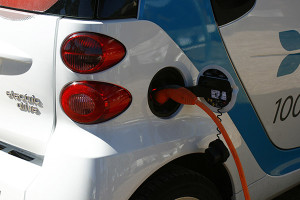Adoption of electric vehicles among crafts- and service enterprises in Norway is currently low, but there seems to be a strong interest for a wider use in the future.
In Norway generous incentives have created one of the largest market for electric utility vehicles (EUVs) in the world. However, most of these cars are owned and used by individuals and families as personal cars. Relatively few are registered and used as company cars. This report documents results from a study of Norwegian crafts- and service companies that have adopted electric vehicles and/or mobile management applications – two technologies that are believed to be of crucial importance for the development of more efficient and sustainable mobility among such enterprises in the future urban landscapes.
Although there are not many EUV users in crafts industry, there is a strong likelihood of electric vans being adopted in the near future. Looking two years ahead, about one in four of today’s non-users say that it is likely, or very likely, their company will adopt EUVs. Fifty-one percent of the informants said it was likely their company would adopt EUVs in the coming two to five years.
Analyses of driving patterns among a sample of crafts- and service enterprises show that a potential replacement of diesel vehicles with EUVs be relatively easily done for 37 per cent of the vehicles, representing 13 per cent of the total transport work. An increase in the range of electric vehicles by 50 per cent, or charging of the cars during the day, could increase the number of changeable vehicles to 64 per cent. This would then result in a 41 per cent reduction in greenhouse gas emissions from all vehicles in the crafts- and service sector.
Battery capacity is a major challenge, particularly for traditional craft businesses. In general, crafts enterprises have more ad hoc oriented travel patterns, which means that limited battery capacity can be problematic, particularly if the company caters for customers located over a wide geographic area. Service enterprises tend to have more predefined mobility patterns where limited battery capacity is more manageable.
Crafts workers are generally enthusiastic about EUVs and nurture a hope that improved models will soon be available. Economic benefits are important when decisions are being made to adopt EUVs, as are issues in relation to organizational identity and image, this most clearly spelt out by craft managers. In sum, the future looks promising for growth of EUV-use within the crafts- and service enterprises in Norway. A faster transition will however require activation of a broad set of measures and continuous efforts.
Report
Pathways to Sustainable Transport among Crafts and Service Workers.
TØI Report 1503/2016
Link to full report in English
Authors: Tom Erik Julsrud, Erik Figenbaum, Susanne Nordbakke, Jon Martin Denstadli,
Hans Tilset, Per Morten Schiefloe – TØI
 Contact:
Contact:
Tom Erik Julsrud
tej@toi.no
TØI, Norway







Follow us: